We will be making no deliveries over Chol HaMoed Pesach. We’ll be on vacation from deliveries, concentrating on our work in the field. Therefore, you will not receive vegetable boxes on Monday, March 29 or Wednesday, March 31. For those who receive deliveries every other week, this break will create a 3-week gap in deliveries for you all. We’ll also be sending this message to you by email and SMS. If you haven’t received a message and you’re unclear about the date of your next delivery, please contact us. Due to current corona constraints, we are unable to hold our long-awaited Open Day over Chol Hamoed. But – if restrictions are lifted and we can indeed invite you all to Chubeza, we’ll be delighted to let you know!
CHAG SAMEACH FROM ALL OF US AT CHUBEZA!
___________________________________
Love is Like a Cabbage
My love is like a cabbage Divided into two, The leaves I give to others, The heart I give to you.
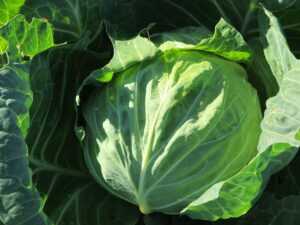
The photos were taken by Chana, and just how beautiful are they?!
Wintertime marks a zenith for the amiable Brassicaceae family that grows in our field. This week we dedicate our newsletter to the “ancient” member of the bunch– the cabbage. You’ve been enjoying his visits for so long that some of you have begun treating him like a guest who forgot to leave… So, to remind you how much you should love and appreciate the humble cabbage, this newsletter is his.
The original wild cabbage originated in the Mediterranean coastal region, Southern Europe and Southern England, where it enjoyed humid weather. This primeval cabbage must have been very different from the cabbage we know today, probably a stem with few open leaves. Cabbage belongs to the very prominent Brassicaceae family which includes cauliflower, broccoli, Brussels sprouts, kohlrabi, kale, collards and the oriental leafy vegetables bok choy, tatsoi, mustard, Chinese cabbage and many others.
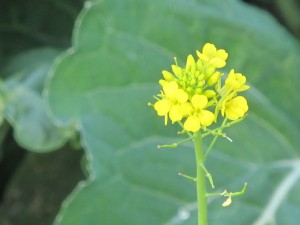
The Brassicaceaes belong to the Cruciferae family, named for the shape of their flowers, whose four petals resemble a cross. Research indicates that vegetables from the Brassicaceae can fight breast cancer, abdominal and intestinal cancer, thanks to phytochemicals containing the indole compound. Cabbage juice is known as a remedy for ulcers, and folk remedies use cabbage leaves to bandage and calm swollen or infectious patches of the body, like post-birth breast engorgement. Cabbage is rich in iron, calcium and potassium, and contains high levels of vitamins B, C and D. Red cabbage contains higher levels of iron, calcium and potassium, as well as vitamin C and dietary fibers. This nutritional abundance makes it a very efficient bone strengthener, immune system fighter, respiratory disease defender, and skin irritation mender. On the other hand, over-consumption of cabbage may adversely affect the thyroid gland.
Read more about the nutritional benefits of lettuce here.
Pickling cabbage is a great way to keep it un-refrigerated for a long period of time as well as preserving its vitamins. Captain Cook used to ascribe his seamen’s excellent health to a daily serving of pickled cabbage.
In Northern Europe, cabbage was one of the only vegetables to grow in the frozen winter, which is why the snowy-day menu included a wide variety of cabbage dishes. This was the fare of every common Russian eater as well, which included sour cabbage soup, rye bread and a nasty drink. Pickled cabbage was brought to Poland and Hungary by Turkish vagabonds in the 16th and 17th centuries, and a common German 18thcentury meal usually included cabbage, sausages, lentils and rye bread. In the Scandinavian region, the winter menu was comprised of foods which could be preserved by smoking, drying or salting—all perfect for cabbage. In China, they would dry the cabbage leaves and store them for winter, then wet and revive them to add to soup or some other dish. The Chinese, too, served pickled cabbage as a side dish at mealtime.
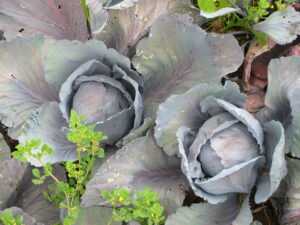

Throughout history, the cabbage has known many ups and downs. The Greeks loved it for its medicinal attributes, but medieval aristocracy turned up its nose at the mere mention of the vegetable: In Medieval Europe, vegetables, particularly leafy vegetables, were considered harmful to your health, as they produce “wind” (gas), which was unthinkable in aristocratic circles. But still, the people continued to eat cabbage (and it’s a good thing they did!).
If you were to heed a Roman scholar from the 2nd century BC, you’d eat lots of fresh cabbage seasoned in vinegar if you intend to imbibe. The Egyptians suggested beginning your meal with fresh cabbage, including its seeds, in order to remain sober till the end of the meal. Seems like the common cure for hangovers was the consumption of more and more cabbage. The East Europeans and Turks stuff it, the Chinese add it to stir-fries, the Ethiopians cook it spicy, and the Japanese serve it pickled as an appetizer. In Germany, cabbage is a national food, in a sweet-and-sour slow-cooked dish of red and white cabbage, and in Scandinavia, the ultimate appetizer is coleslaw (whose name derives from the Dutch for cabbage “kool” and salad “sla”).
In 1984, the cabbage was finally granted its due when the UN Food and Agricultural Organization declared it one of the 20 most important foods in world nutrition.
Check out our variety of cabbage recipes in our recipe section on our website.
Like the rest of its siblings, the cabbage leaf has a unique texture, allowing it to repel the rain showered upon it in wintertime, so that the leaf does not wear thin and rot from over-saturation. In order for the water to reach the roots and quench their thirst, the face of the leaf has a waxy, water-repellent texture, thus the raindrops are not absorbed but rather drip-drop gracefully into the earth

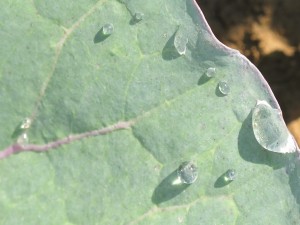
“Cabbages are quite an amazing feat of nature. Cabbages plants produce normal-looking leaves for quite some time before reaching a threshold,” writes Farmer John in his cookbook Farmer John’s Cookbook: The Real Dirt on Vegetables. Then, as if they are attuned to an inner biological clock, “they suddenly start curling in,” producing a loose ball, which then proceeds to “[layer] one leaf on top of the other,” pushing the round head from the inside “until they create a tight sphere.” It is truly amazing, and I’m surprised each time it happens, when the flat leaves curl in roll up into a ball – just like last time.
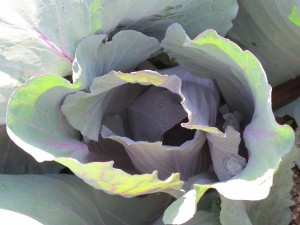
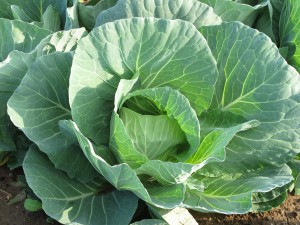
Wishing us all wonders and a pleasant week of sunshine and rain,
Alon, Bat-Ami, Dror, Orin and the entire Chubeza team
______________________________________
WHAT’S IN THIS WEEK’S BOXES?
Monday: Kale/Swiss chard, lettuce, celeriac/parsley root, beets, cucumbers, tomatoes, white or purple cabbage/cauliflower, parsley/coriander/dill, potatoes/ turnips/ kohlrabi/fennel, green fava beans/peas, new onions/scallions.
Large box, in addition: Green garlic, carrots, bell peppers/pumpkin.
FRUIT BOXES: Bananas/lemons, red apples, avocados, oranges, clementinas/pomelit.
Wednesday: Lettuce, celeriac/parsley root, beets, cucumbers, tomatoes, carrots, white or purple cabbage/cauliflower, parsley/coriander/dill, potatoes/kohlrabi, green fava beans, new onions/scallions.
Large box, in addition: Kale/Swiss chard, green garlic/peas/broccoli, bell peppers/pumpkin.
FRUIT BOXES: Bananas/lemons, red apples, avocados, oranges, clementinas/pomelit.
